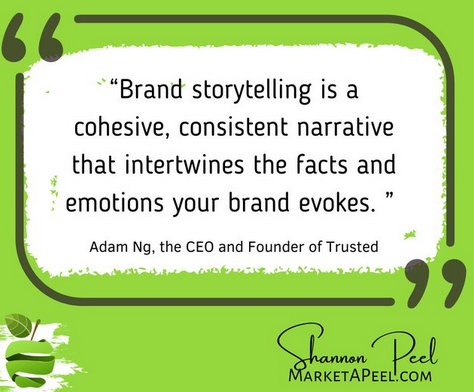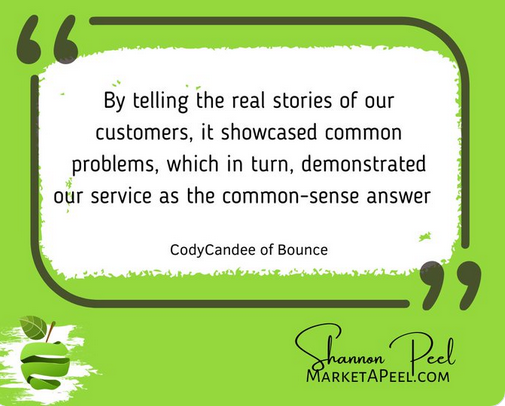Last Updated on Mon-Mar-2024 by Robert Bogere
Initially, I didn’t want to show up in digital spaces. I thought such was a complete show and brag off signs of I know more people.
Which wasn’t the case. But people before me were trying to tell their brand stories to their audiences to strengthen their brand reputation.
4 years back, sad moments happened. I failed to change my career to the desired industry because of being unknown to certain groups of people and brands.
Such brands couldn’t trust me with their tasks and work because I was unknown and you can’t blame them.
I had no connection with such people and brands. This doesn’t mean my brand was nonexistent. No, it existed, but it had issues with its reputation and authority. These two (2) were very weak in the public eye.
This is no different from you or any other brands out there. Whatever happened to me can happen to you. It doesn’t matter if you’re earning $15,000 monthly when having a brand with weak authority and reputation.
With my missed opportunities, this is why I decided to craft this article where you’ll explore the power of storytelling in brand building. And what it means in building a lasting connection with your customers.
Need to carry out a brand audit for your brand? This is for you!
Before we go further;
What Is Brand Storytelling?
Story Soft defined brand storytelling as the act of using an emotion-evoking narrative to connect your brand to customers with a focus on creating empathy by aligning brand values with your customer values.
Then, Forbes said;
Brand storytelling is the art of using stories to connect your brand with customers; with a focus on authentic experiences and emotional connection
And, lastly, the marketing insider group defined it as using a narrative to connect your brand to customers with a focus on linking what you stand for to the values you share with your customers
Simply meaning, brand storytelling is about being true to yourself by using different narratives to emotionally create a link with your customers

In crafting your story, you shouldn’t miss things like character, setting, conflict, rising action, climax, and denouement.
Discover: how you can create your brand position statement for your brand
Why Is Brand Storytelling So Important?
Imagine if I had no story to tell you, would you believe what I’m telling you? No. If we meet somewhere like a conference, workshop, etc what would both of us do?
It’s introducing ourselves to each other. In our introductions, things like what we do, the country we come from, our experience, etc can’t miss out in our introduction.
The details we tell each other and how we craft such are our stories. We do all that to create a connection with each other because it’s our first meeting. Our aim is to leave a lasting impression.
So the reason why brand storytelling is important;

It Creates An Emotional Connection
When you share your story with your audience, it becomes relatable, authentic, and humanized. You connect with someone who aligns with your values and emotions.
With storytelling, there’s the ability to evoke emotions and creation of meaningful connection with your audience.
Your customers are more likely to connect with you on an emotional level. Perhaps, it reminds them of something from their childhood. Also, emotional connection creates a bond.

It Creates Differentiation
When I introduce myself to you as a brand strategist who identifies brand areas of improvement for start-up and SME brands, I’ve already showcased my uniqueness and differentiated myself from others.
Your brand has a distinctive story to tell and that story can be a powerful tool in carving your specific niche in the marketplace.
You hear people saying I don’t have a story to tell. And you wonder how it be possible. Every brand has its unique and different story to tell
By effectively communicating your brand story, your brand can position itself as a problem solver that understands customer problems.
It Helps To Make Your Brand Memorable
In this era, it’s only memorable brands which stand out in the marketplace. This can only be achieved when you consistently tell your story.
People remember stories but not facts and data. Yes, such compliment your story, but all can’t be remembered.
When you incorporate your storytelling elements (characters, setting, plot, theme, conflict, climax, and resolution) into your messages, you’ll create and leave a mark on your customers resulting in remembering and recalling your brand.
It Helps To Build Your Brand-Loyal Empire
When you feel a strong emotional touch with any brand, of course, you’re more likely to become a loyal customer and an advocate resulting in making repeat purchases.

This comes as a result of crafting your brand story which provides customers with a sense of belonging and identity.
Loyal customers not only become brand ambassadors but are also less likely to be taken away by competitive offerings.
When you understand the art of storytelling, your brand can stand out, connect deeper with your customers and build strong brand loyalty.
Discover: How you can consistently maintain your brand
So what makes some brands like Coca-Cola so successful while others fail?
The whole difference lies in storytelling. You can’t activate and reinforce purpose without storytelling. This is evident in the Heineken brand storytelling and all Coca-cola campaigns.
The best campaign to look at is the one of the Ramadhan which featured a young Muslim woman who had to endure the challenges and discomfort of fasting in the late afternoon.
As a minority, she is also the victim of harsh stares and mockery from passersby. When the female protagonist planned to break fast with the traditional meal of three dates, she was offered a glass of Coke from a supportive passerby.
The passerby patiently waited for the sun to set before indulging in the drink with the female protagonist.
The campaign ended with the message “What unites us is bigger than what divides us. Review what the president of Coca Cola had to say about their brand.

Elements Of A Great Brand Storytelling
When you’re ready to tell your story, there are things you don’t need to miss out as below;
1. Empathy
Make sure your audience can see themselves in your brand story. What makes brand storytelling so important is empathy.
Stories create an empathetic link between the main character (the customer) and the audience.
Empathy allows your audience to put themselves into the shoes of the customer. A good story captures an audience’s attention and holds it in suspense until it’s finished.
2. Attention-grabbing
Establish and stick to a distinct voice and personality for selling your brand story.
3. Authenticity
Be honest and genuine about your values, your company’s unique features, and the challenges you face.
4. Relatable
Avoid using industry-specific or technical jargon. Show that you understand who your customers are.
5. Alignment with business goals
Your brand story should be aligned with your business goals and integrated into all areas of your business.
6. Provoke action
Remember, action is king. Find a place in your story to place your call to action and push the audience into becoming customers.
The best way is to start with yourself. Focus on explaining how certain events in your life established specific personal values. An proper example is my story.
My story gives you a hit of my values, motivations, passions, focus, etc. A great story has to be authentic and genuine.
It has to reflect your past and values. The best campaign which showcased the above elements is Apple’s “Get a Mac”
Using A Brand Case Study To Tell Your Brand Story
1. Spot a compelling story
Choose a brand case study that highlights a problem or challenge which was faced by your customer. Aim at your success story that shows how your brand or value managed to make a positive change to your customers.
2. Set the background
Start by providing context and background information about the main character – customer. Describe their industry, position in the marketplace, and problem or obstacles they were facing at the time when such customers approached your brand.
3. Showcase your solution
Introduce your brand’s product as the solution to the customer’s obstacle. Clearly, explain how your brand addressed your customer’s specific pain points and problems.

4. Demonstrate the outcome and benefit
To show the outcome, use facts, data, and metrics to show the results which were achieved through your brand’s intervention.
If possible quantify the improvements made – cost savings, increased leads and sales, higher customer satisfaction, etc
5. Show quotes from the leaders and testimonials
In this digital era, people buy from brands that are transparent about what they are doing. This is where social proof or evidence comes into play.
Using a case study to tell your story, you need to show quotes and testimonials from your customers. Such evidence and experiences add authenticity and credibility to your brand case study.
6. Humanize your story
Remember, you sell to humans. Try to make your case study relatable and human by involving the personal touch of the people who were part of that project.
For example, introducing that this project was done by so and so as the lead director. Introducing such your project people will help readers connect emotionally to the brand and your story.
7. Use visual elements
Consider using visual elements like charts, info-graphics, real images, and not stock images to break up the text to make your case study more appealing and engaging. Such visuals can also help in illustrating the problem, solution, and results more effectively.
8. Tell the journey
Talk about the journey of your customer’s interaction with your brand. Try to show the problems or obstacles faced, your collaboration process, and how your brand provided support other stuff throughout the whole process
9. Last, but not least call-to-action
Put a clear call to action that encourages readers to reach out to your brand for more details in case they’re interested. Consider including relevant links within your case study.
10. Share your case study widely
Once, you’ve finished developing a compelling brand case study, share it widely on your various channels – website, social platforms, newsletter, etc
Rap up of case study storytelling
Using brand case studies to tell your story, helps in showing the unique value your brand can bring to the customer table.
Focusing on the narratives that resonate with your target audience, your brand can harness the full potential of brand storytelling and create the way for enduring success




